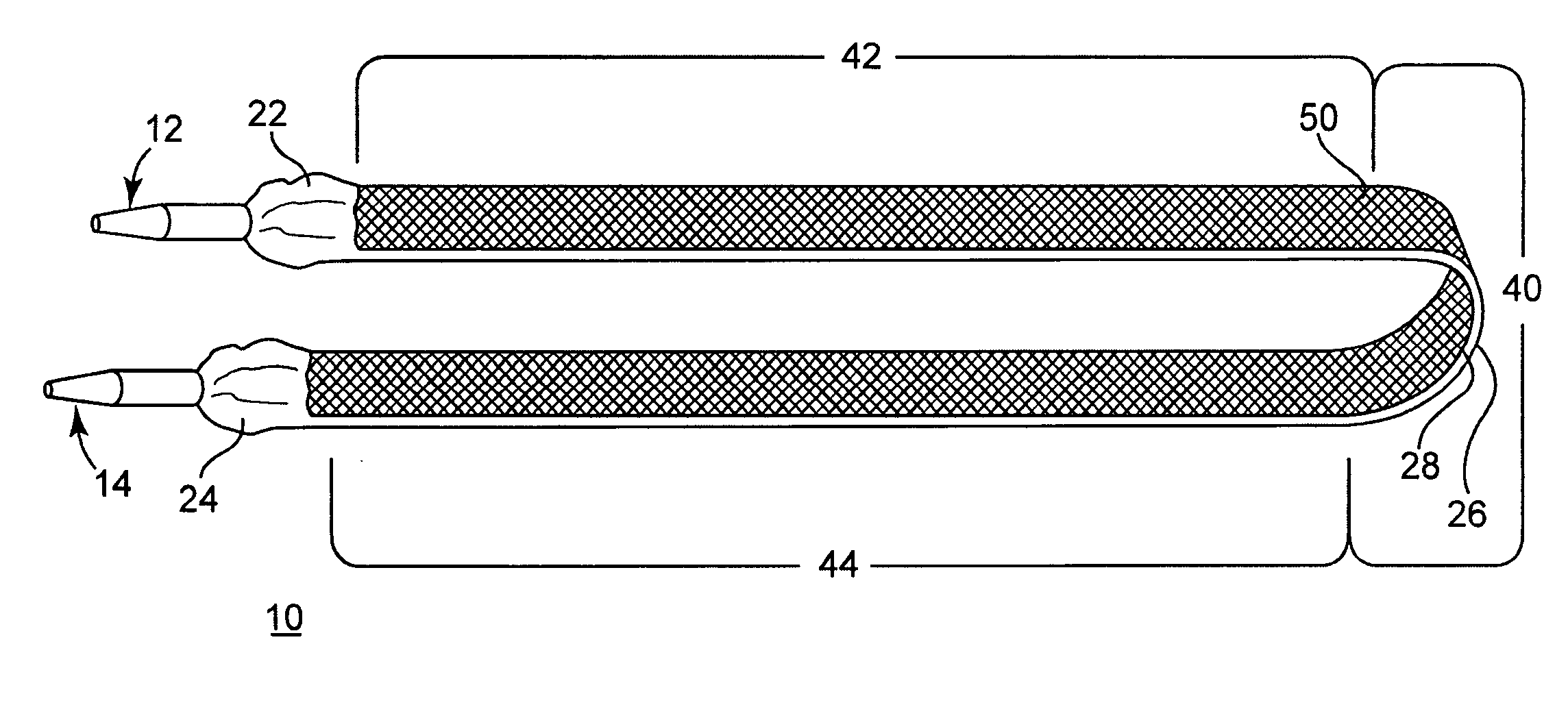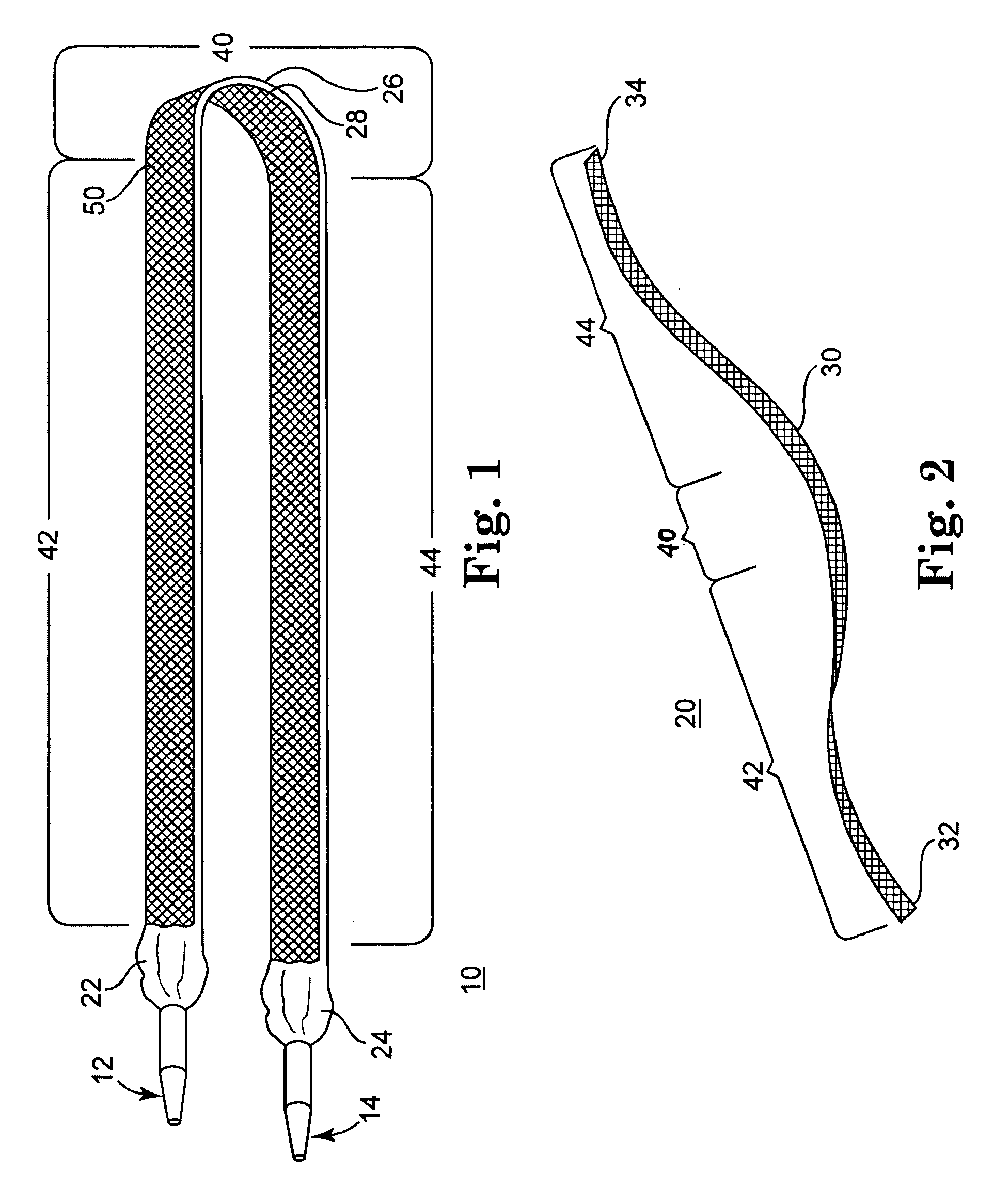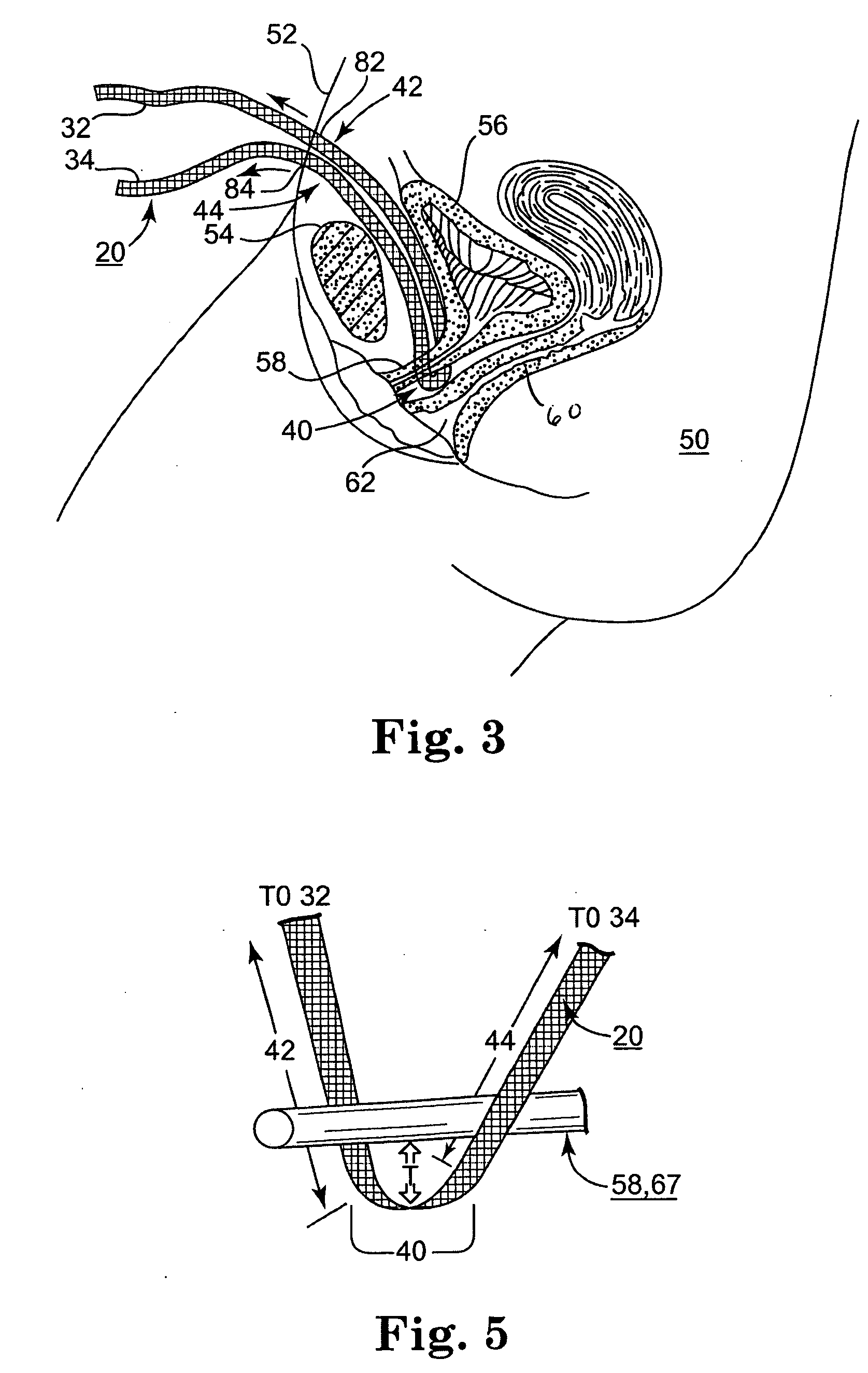Adjustable tension incontinence sling assemblies
a technology of incontinence slings and tension plates, which is applied in the field of elongated slings, can solve the problems of difficult to judge just how much tension to apply to achieve adequate tightening or loosening of the central support portion, and patients may also experience urge incontinence, so as to facilitate access or engagement, enhance post-operative sling adjustment, and enhance efficacy and patient comfor
- Summary
- Abstract
- Description
- Claims
- Application Information
AI Technical Summary
Benefits of technology
Problems solved by technology
Method used
Image
Examples
Embodiment Construction
[0057]The various embodiments of the present invention are implemented in slings suitable for and methods of implanting such slings in the treatment of male and female urinary and fecal incontinence and to effect pelvic floor, perineal floor, and pelvic proplapse repairs employing a variety of surgical approaches. For example, female pelvic floor repair slings may be implanted by techniques that involve transvaginal, transobturator, suprapubic, pre-pubic, or transperineal exposures or pathways, and male urinary incontinence slings may be implanted by techniques that involve transobturator, suprapubic, or transperineal pathways. Any of the disclosed embodiments can be used as fecal incontinence slings which may be implanted by techniques that involve transvaginal, transobturator, suprapubic or via perineal floor pathways. In fecal incontinence applications, the disclosed embodiments can be used to correct the anorectal angle in the rectum to re-establish continence in patients. The a...
PUM
 Login to View More
Login to View More Abstract
Description
Claims
Application Information
 Login to View More
Login to View More - R&D
- Intellectual Property
- Life Sciences
- Materials
- Tech Scout
- Unparalleled Data Quality
- Higher Quality Content
- 60% Fewer Hallucinations
Browse by: Latest US Patents, China's latest patents, Technical Efficacy Thesaurus, Application Domain, Technology Topic, Popular Technical Reports.
© 2025 PatSnap. All rights reserved.Legal|Privacy policy|Modern Slavery Act Transparency Statement|Sitemap|About US| Contact US: help@patsnap.com



